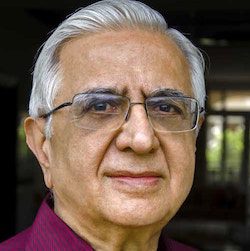
This occasional blog is by one that spent 35 years in the Indian Foreign Service. Subsequently taught diplomatic practice (22 years with DiploFoundation). I began as a student of the Chinese language, and thereafter, four years in Beijing on two assignments. That fascination with China has persisted, but let me address a broader theme — trends in small group regional diplomacy.
We now see the emergence of small clusters of states, often four or five countries, using common interests to pursue specific objectives, which usually also produces closer cooperation in other fields.
Examples of minilateralism
Quad
Australia, India, Japan and the US have gradually moved forward on their shared interests following a 2007 initiative by Japan PM Abe. Their objective: a ‘rule-based’, open, inclusive Indo-Pacific region. An unstated aim: to blunt China’s moves in East Asia, including its’ militarization of small islands and reefs in the East China Sea, which endows Beijing with stronger military capacity, plus long reach into the Indo-Pacific region. Australia and India have overcome their initial hesitation; this group has taken shape after head of government and foreign ministers meetings. Three of them are defence allies; India does not identify itself against any other power. Beijing of course, takes a different perspective.
I2U2
After a July 2022 meeting of the foreign ministers of India, Israel, the United States and the United Arab Emirates, these four announced this new cluster. For them its’ an ‘ad-hoc, informal, issue-specific and geoeconomic initiative’. Their ambitious agenda: ‘to mobilise private sector capital and expertise to modernise infrastructure, advance low carbon development industries, improve public health and access to vaccines, advance physical connectivity, create new solutions for waste treatment…and promote the development of critical emerging and green technologies’. Political congruence underpins this technology orientation.
AUKUS
This 3-country cluster, Australia, the UK and US, is an extension of their alliance, announced in September 2021, focused on the Indo-Pacific region. A joint submarine program is an immediate aim. China is the unstated adversary.
Pacific Alliance
Chile, Colombia, Mexico, and Peru created a full regional group (RG) in 2011, based on congruent policies, including a strong orientation towards Asia. Their goal is to pursue a strategic agenda, including free trade among the four states. Several other states now want to join; it outshines many RGs in performance.
Common elements
First, small clusters are easier to manage than large ones. Second, informal methods work well within such groups. Third, success hinges on the careful selection of partners, plus clarity of intention. Finally, the method may suit small states, provided they do not have a dominant large neighbour who may see this as a hostile move. Comments welcome.
Click to show page navigation!


